Diving - The Galapagos Islands - Trip of a lifetime!
On Board
Once on board the Pinguino Explorer (AKA Aqua, which actually seemed to be the name of the company running the trip), we were allocated our cabins.
Andy's and mine was below deck, partially below the waterline, so lacked windows that could be opened to the outside world, but with the advantage that it was bigger than those on the upper decks.
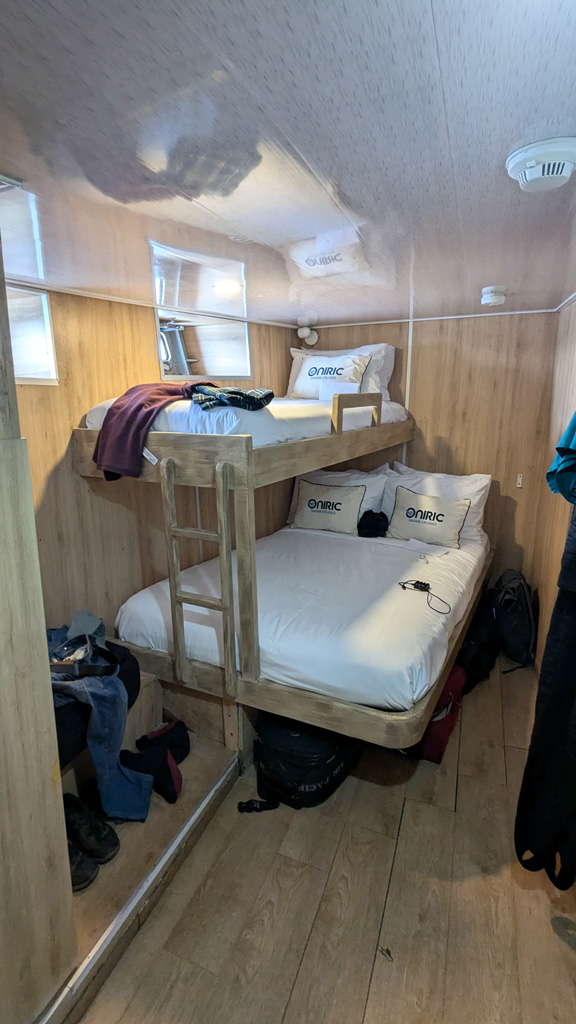
Our cabin - Cosy, but bigger than most
The bunks were a little unusual in that the lower was a double and the upper a single. Andy kindly chose the upper, which had the small advantage of sealed portholes to see out of, offset against the greater space of the lower bunk.
We had plenty of space to store our luggage under my bunk and there was also a wardrobe, which we hardly used, a large shelf above it (mostly used for cameras, computers, etc) and a small, but usable shower room with a separate sink and toilet behind the same door. It wasn't large, but it was about on par with what I'd had on previous liveaboards and was a good size larger than the upper cabins, which had only single bunks and limited floor space.
Daniel and his fellow guide, Christian, gave us an overview of the boat and the agenda for the week, delivering a route that looked much like this.
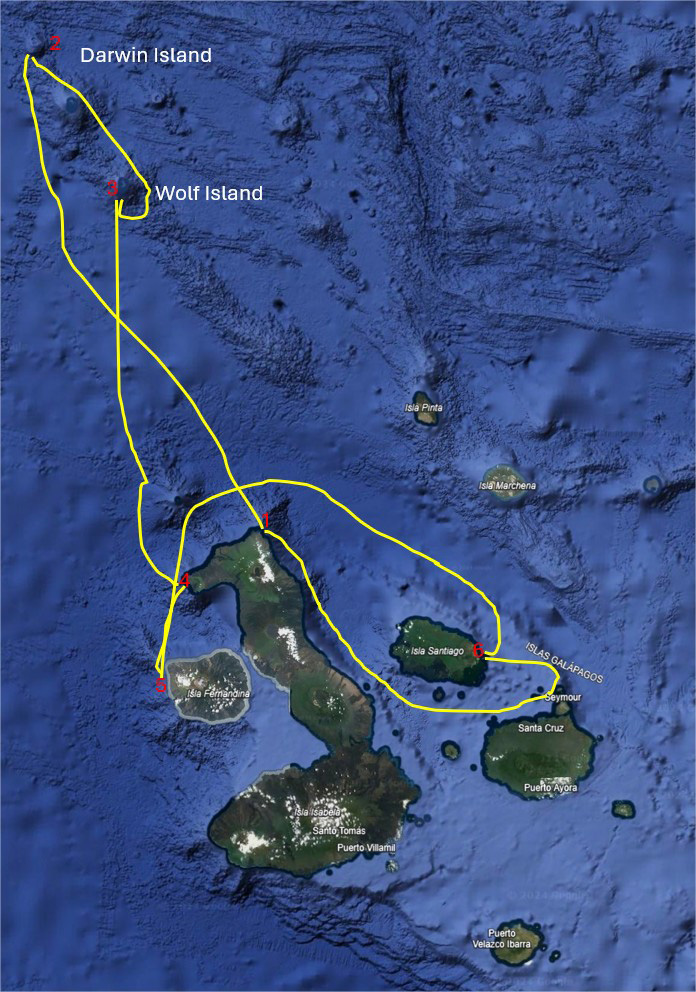
Our route, starting from, and returning to, Seymour/Baltra Island
Broadly it was in line with our expectations.
After introductions from the other guests (5 Americans, 2 Swiss, 2 Spaniards, 2 South Koreans, a German, a Norwegian and a Cypriot, which with us made 16), we were told to assemble our kit and prepare for a checkout dive to sort our weighting, but everyone knows these are for the guides to judge people's competency.
As the Galapagos features quite a lot of dives with strong and variable currents, they ask for 50 dives minimum and many of the people onboard seemed to have just that many.
One of the Spaniards apparently had thousands of dives, but once we dropped into the water at Seymour North (Seymour being another name for Baltra Island), it was apparent that many were either inexperienced or out of practice.
Most of the other divers in our group of 8 had pretty awful buoyancy control on this first dive, probably due to under or over weighting.
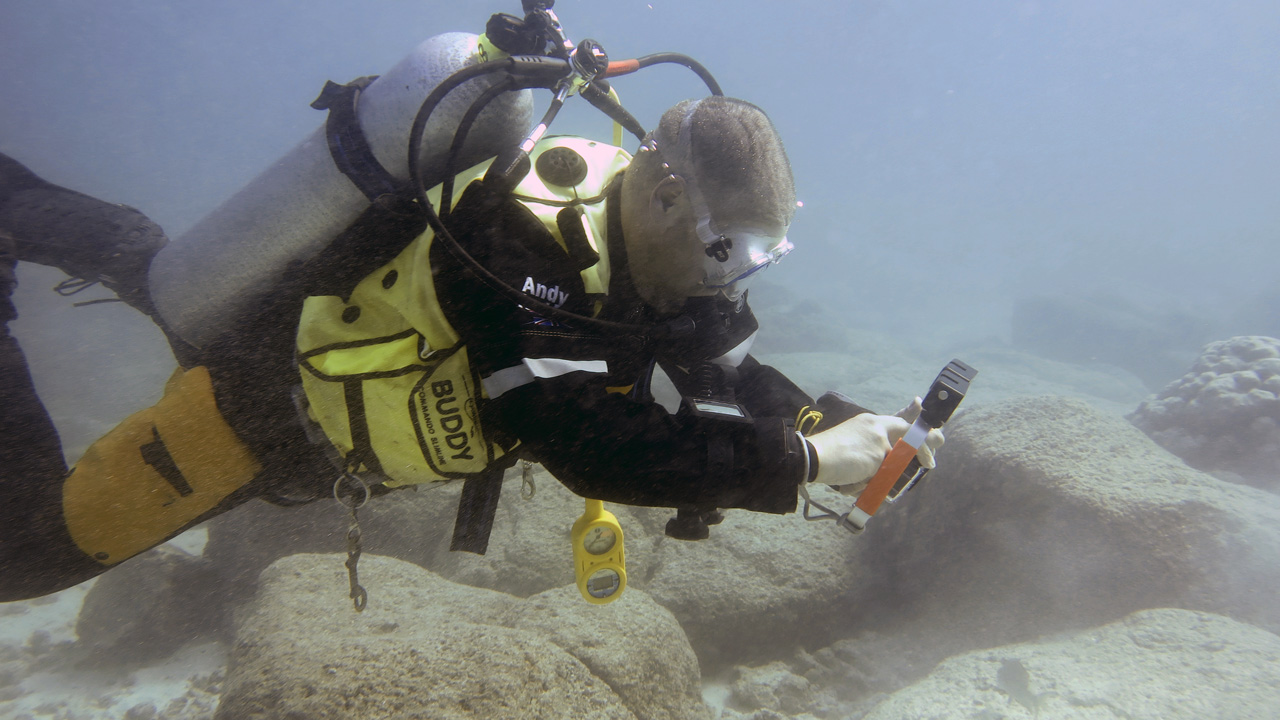
Andy on the checkout dive
Andy and I had both brought our dry suits and didn't really feel overdressed on the first few dives.
This dive was pretty ordinary, we spotted a lot of fish, some quite large examples, but very few unusual to the Galapagos. It looked like a murky Red Sea dive - Not bad, but not exceptional.
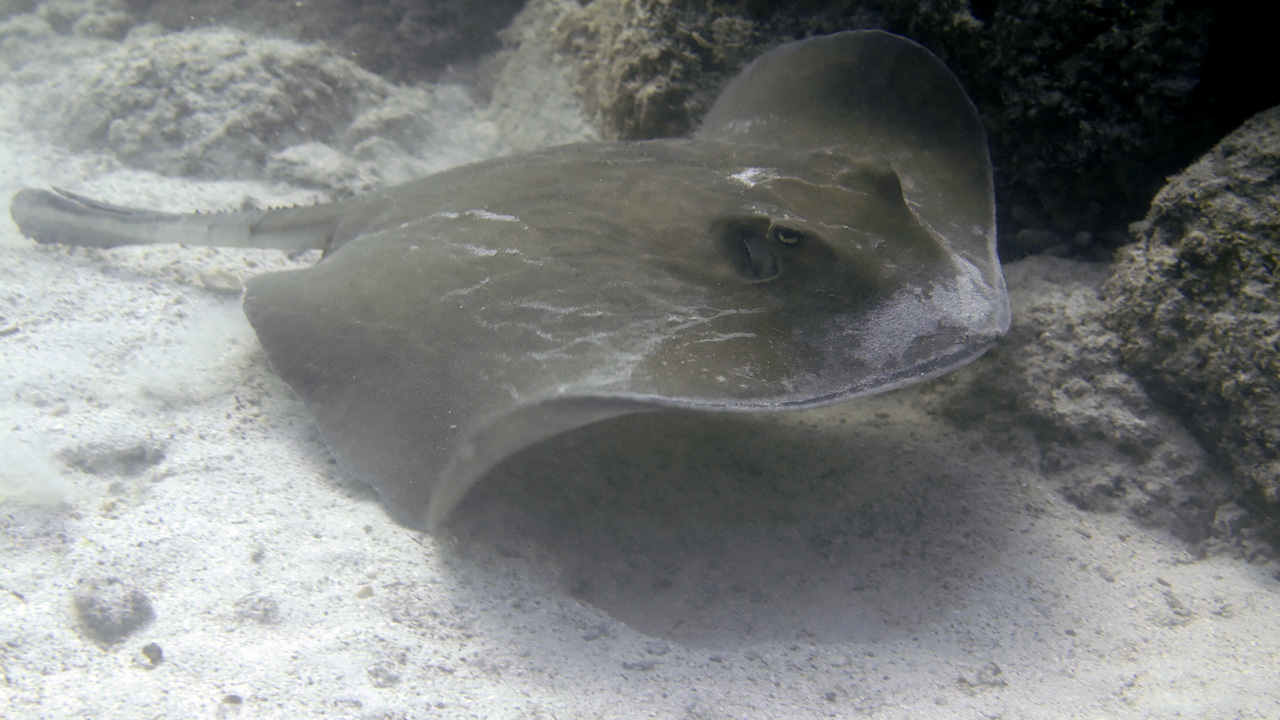
A Stingray on the checkout dive
I took 7 KG for this dive, but increased it for subsequent dives as I had felt a little slow on the descent.
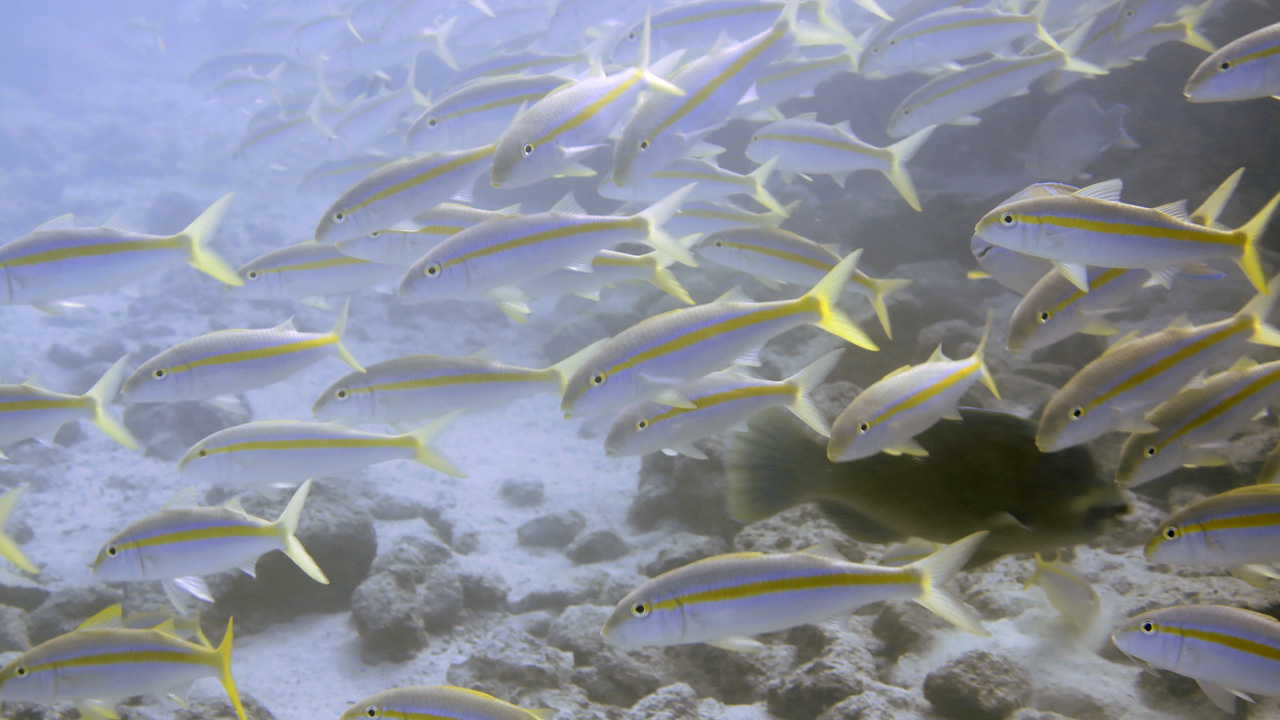
Plenty of reef fish at all the sites, but mostly familiar ones.
There was just one dive that day, we hadn't got around to diving until 3:30 PM, so back on board we adjusted our weights and retired to the interior of the boat (or up to the sun deck, as it was still quite warm) before dinner.
Most reviews I had read had praised the food highly, but, while it was perfectly acceptable, I never felt it was exceptional. There was, though, generally plenty of it.
I rather rashly switched off the aircon in our cabin and it got quite stuffy, so both Andy and I had fitful sleeps that first night as we cruised to Isabella Island for our first 'serious' dives.
Day 2 : Cabo Marshall, Isabella Island
We were originally slated for 3 dives at Cabo Marshall, with the hope of seeing Manta Rays, Mobula Rays and maybe even Whale Sharks.
We were woken up at 5:45AM for a 6:00AM briefing and we were in the water at 7:15.
The first dive was in water with a very distinct thermocline and reasonably good vis (up to 20M), but again we didn't see anything particularly remarkable on this dive.
It didn't start well as I managed to lose my Go Pro on entering the water. I thought one of the other divers picked it up, but when I asked her she didn't seem to understand what I was saying. Luckily, she had returned it to the RHIB we dived from, so it was safely back there when I returned at the end of the dive.
Like the previous day there were very big shoals of reef fish and some quite large examples of some, but aside from a Galapagos Sealion that buzzed us briefly we didn't see any of the predicted 'big animals'.
We did see a shoal of Barracuda.
On this dive I was very underweighted and struggled greatly to complete my safety stop, prompting me to up my weight to 10KG for the next.
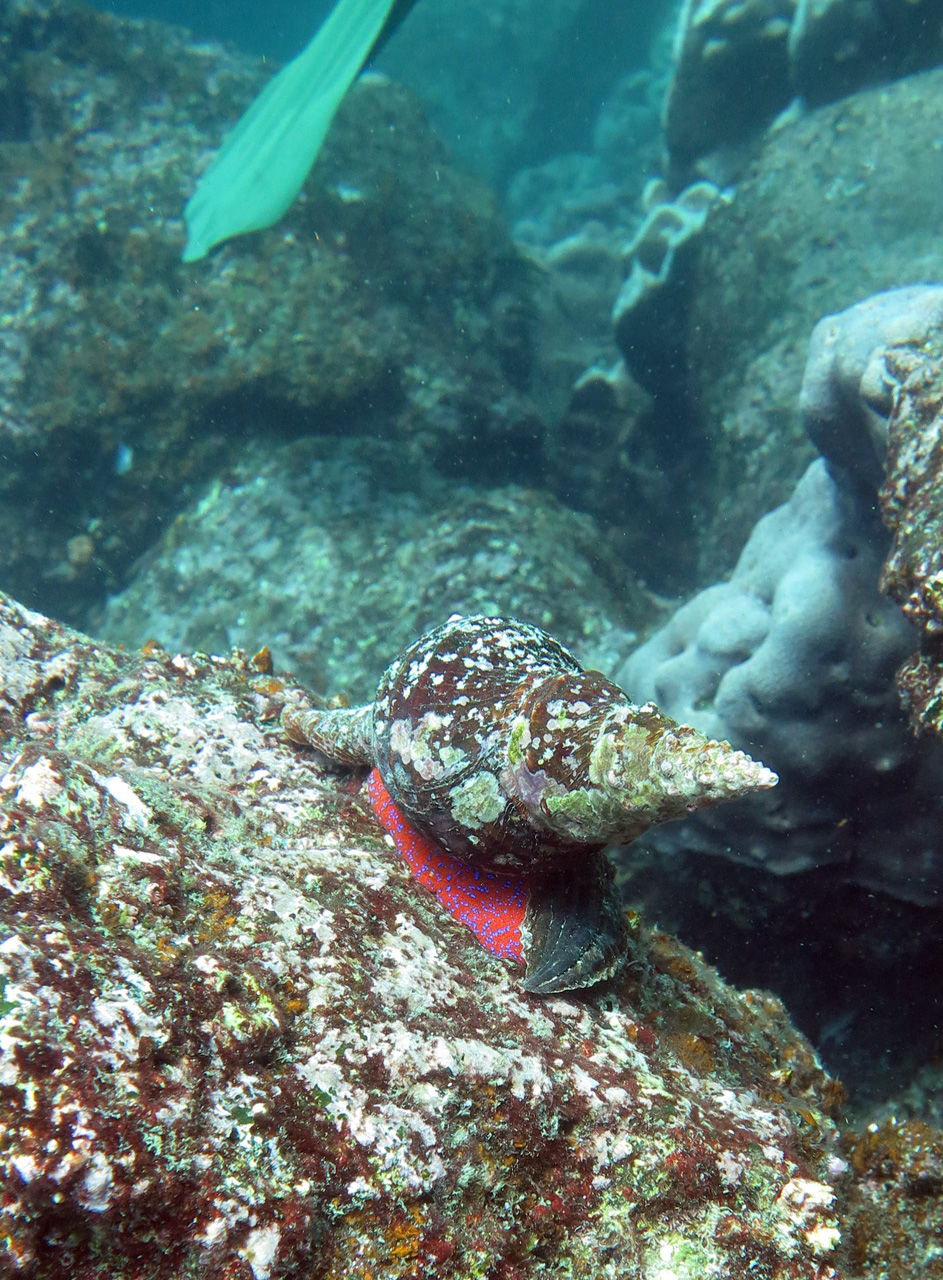
Conch - We saw a few of these in the southern islands
Breakfast followed and then we returned to repeat the same dive, entering the water at around 10:15.
Each dive of the trip was taken from the Zodiacs and, while getting into (and out of) them from the boat was easy enough, getting out of the water seemed more of a challenge than boarding our RHIB ever is, although it had a small ladder at the stern, which helped a lot.
This dive was warmer, but had far more limited visibility.
Again, sadly, we didn't see any of the predicted Rays, although we did see a garden of Galapagos Garden Eels, a guinea fowl puffer (a very bright yellow fish), plus a couple of Galapagos Fur Sealions, which swam around the group for a while.
My weighting was far better on this dive and I had no problem holding a 6M safety stop this time.
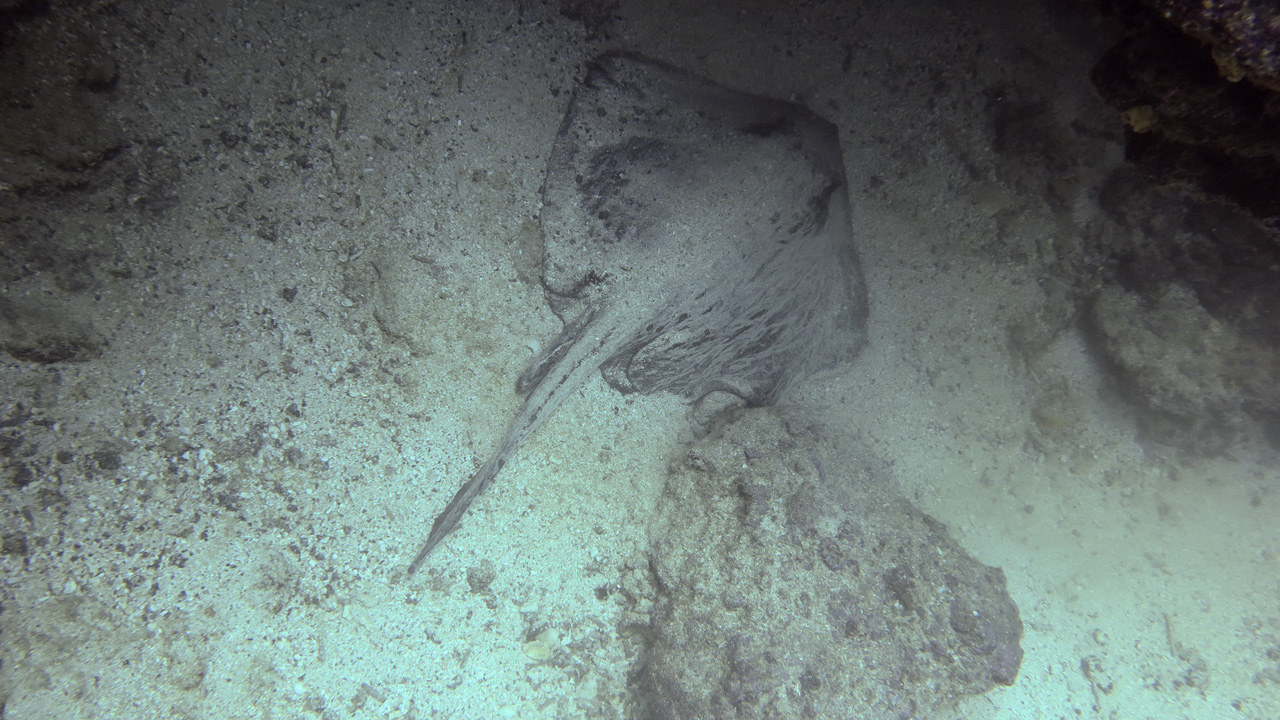
Stingrays were a common sight
After this dive, plans for a third here were scrapped and we headed in the small RHIBs to a lagoon where we snorkeled with Fur Sealions.
We paused along the way to look at some Galapagos Cormorants which have evolved to lose the use of their wings, but apparently are now expert divers, capable of reaching 70M!
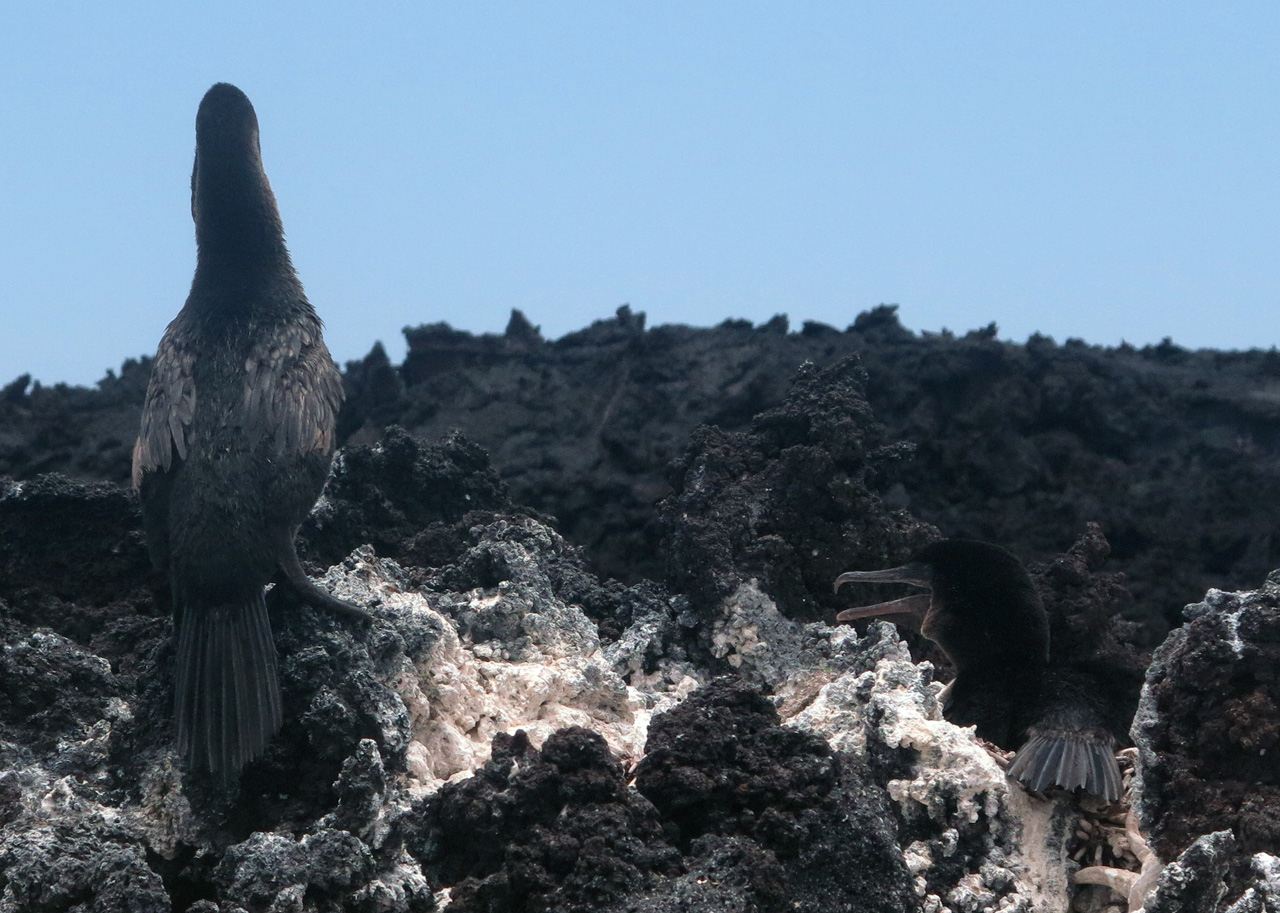
Flightless Galapagos Cormorants
As we entered the lagoon, we spotted our first shark in the water, a White Tip Reef Shark, but it quickly departed as we arrived.
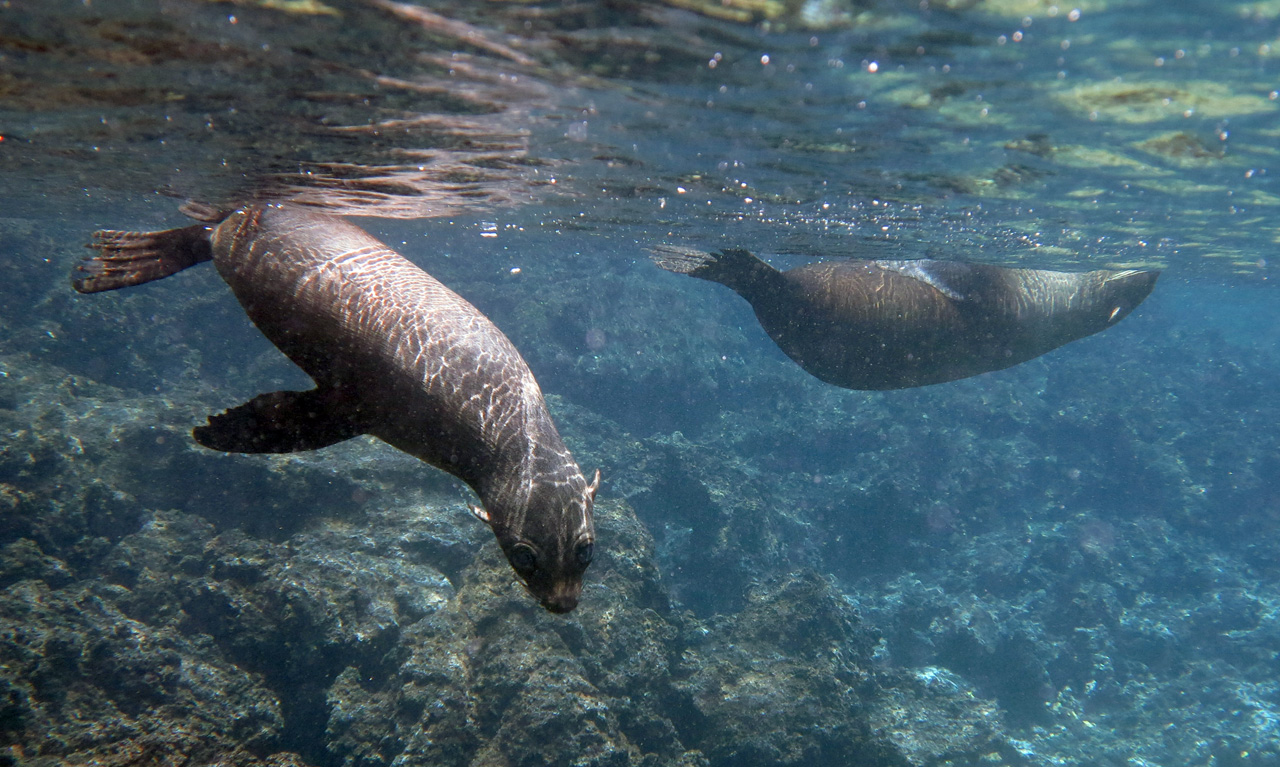
Playful Sealions
Luckily the Sea Lions were in playful mood, especially the young ones with their mother, that repeatedly buzzed up and around us.
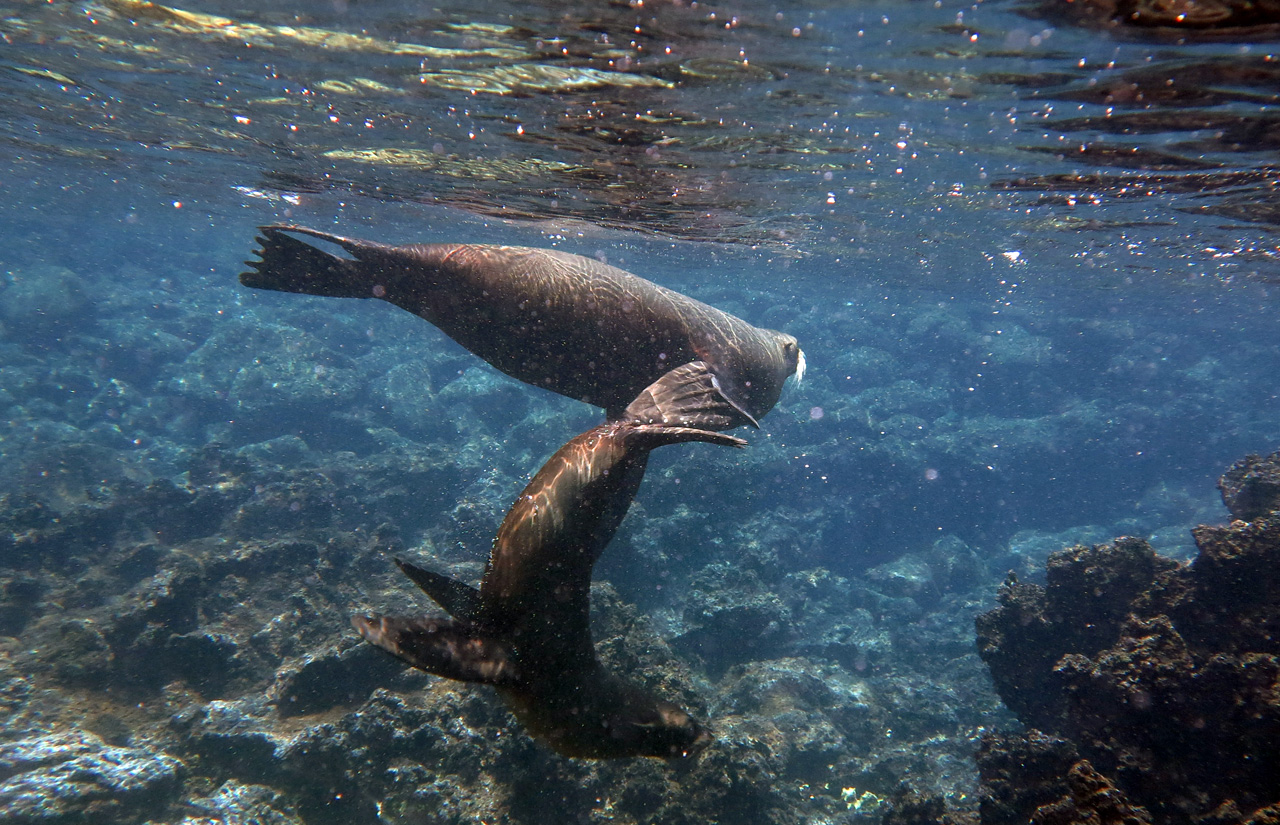
The small lagoon was very clear, being mostly inside the volcanic coastline
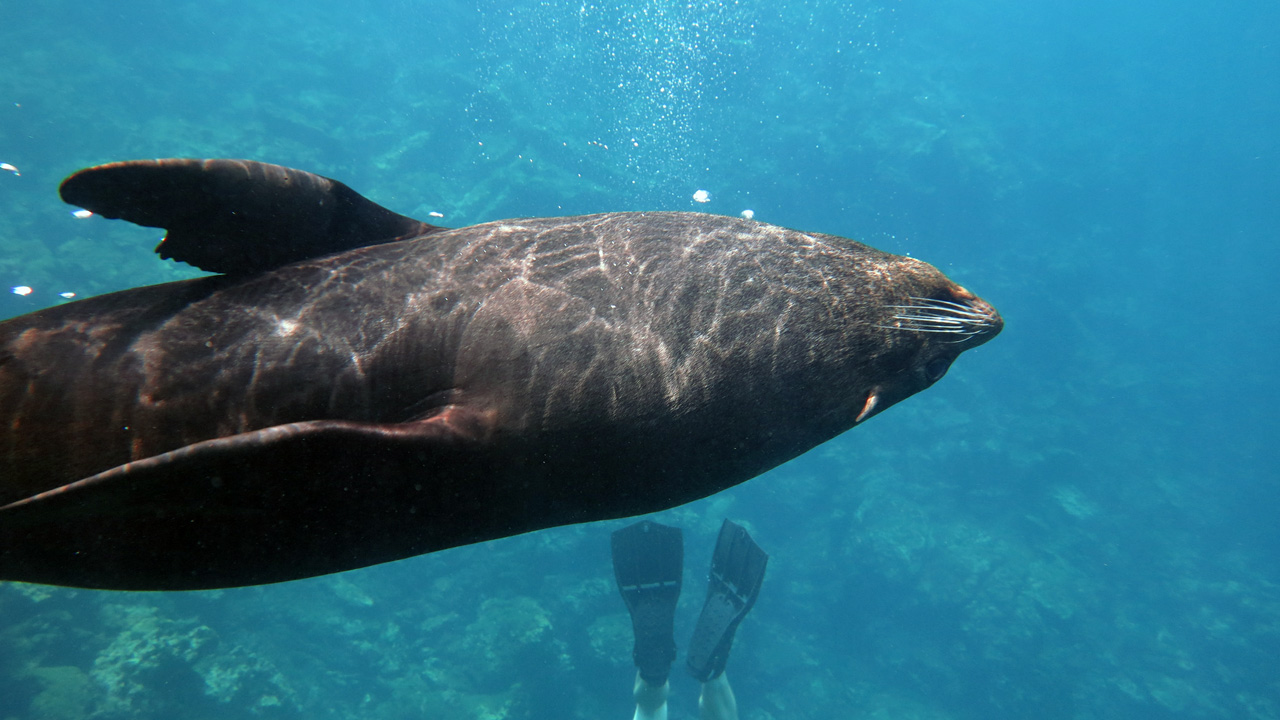
Sealions, like seals, seem unbothered by, but interested in, divers
A couple dived with Andy as he dived down to the bottom of the lagoon on one occasion.
Quite a fun diversion as it turned out, but not really compensation for a rather disappointing day's diving.
After lunch back on the boat, we set off on the 16+ hour trip out to Darwin Island, where we vehemently hoped that our encounters with the wildlife would improve.
Time on board was spent updating logbooks, eating dinner, drinking the local beer at $5 a bottle or chatting with the other guests.
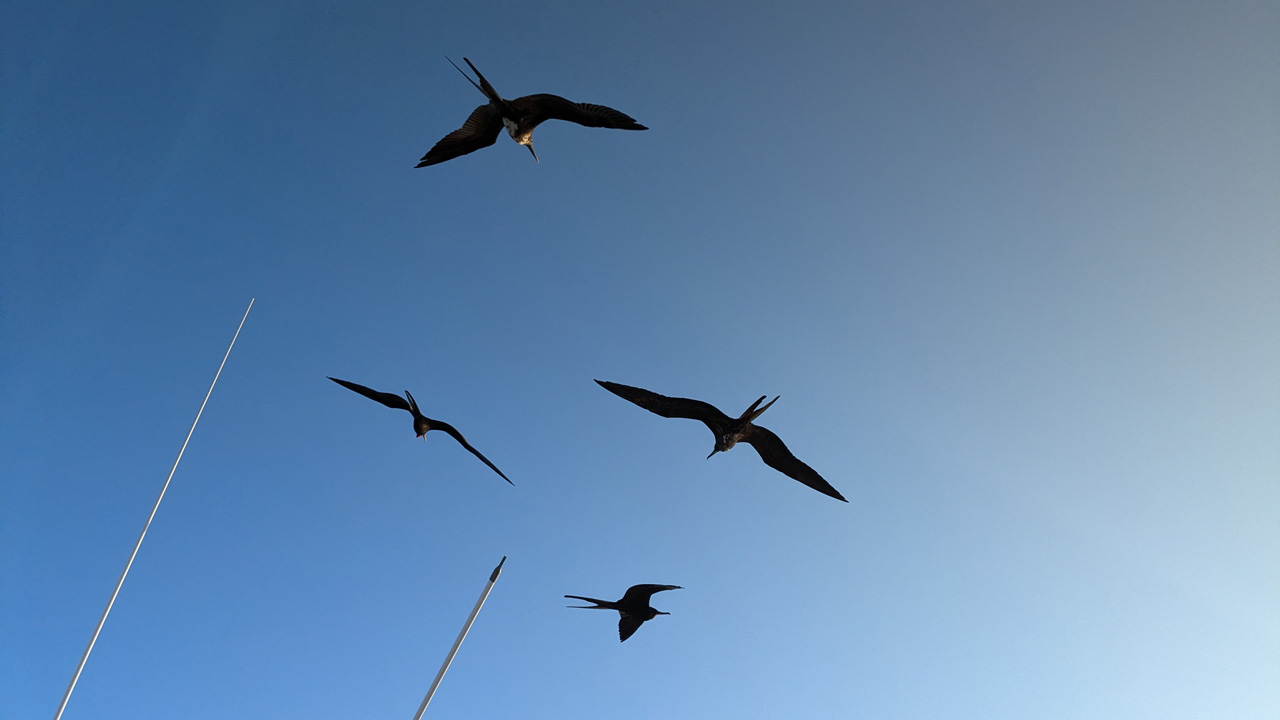
Frigate birds were a regular sight, either following the boat or riding on board
One guest was a young pilot for an American airline, but while I'm sure he's a fine pilot, he was a very disorganised diver - Luckily, he took the (quite heavy) hints about how long he took to get ready and after a few days, started to kit up 15 minutes before the rest of us.
Generally, the standard of the diving improved as the week went on and, although the other group had a couple of dives aborted, our group of 8 didn't.
I was a bit surprised at the random nature of the split of divers. Some of us had hundreds of dives logged, while others had barely made the 50, but they'd assumed a similar standard of diving ability for everyone, which certainly wasn't the case.
While that's perhaps understandable, they then never moved anyone from one group to another, which I'm sure would have improved things for most divers on the trip, but at least we never lost a dive to poor diving skills (although one American in group lost weight pouches on two dives and then forgot them entirely on a 3rd, carrying a large rock around with him for the dive!).
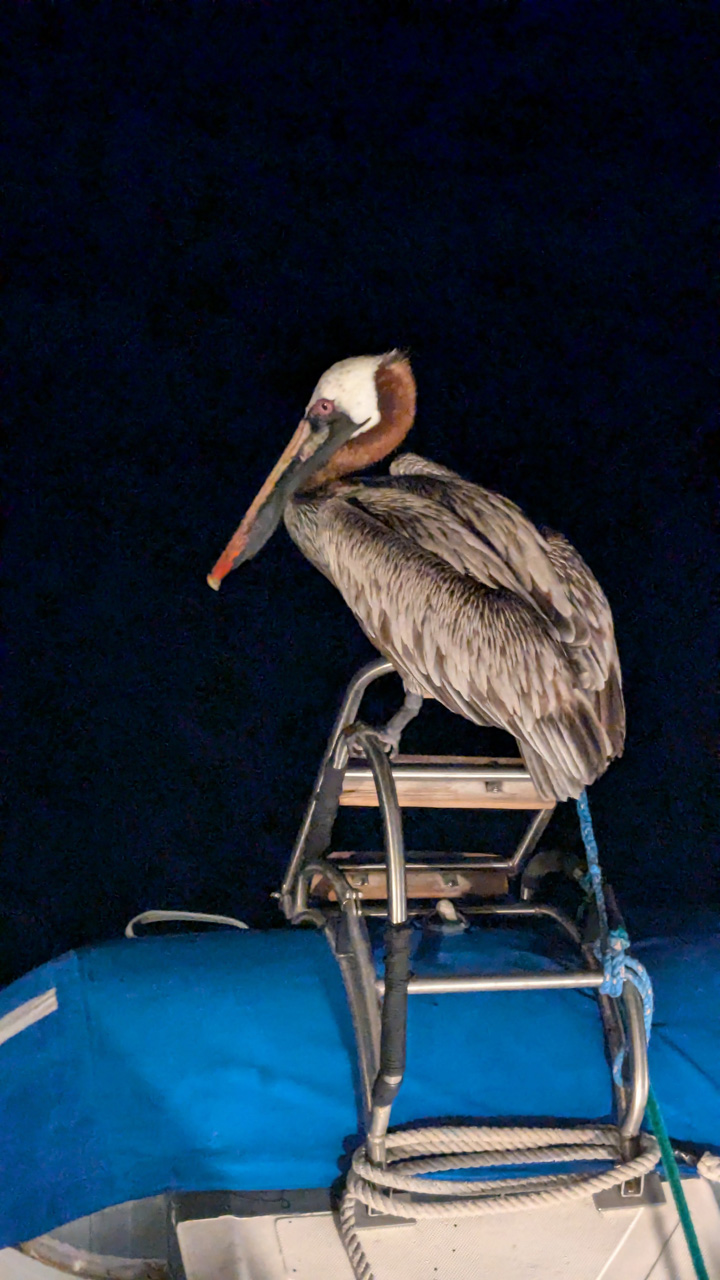
A couple of Pelicans hitched a ride for a while
The long journey was mostly overnight and the gentle rocking of the boat that some may have found nausea-inducing simply lulled me to sleep and I had a good night's sleep.
Continue reading on the next page.


